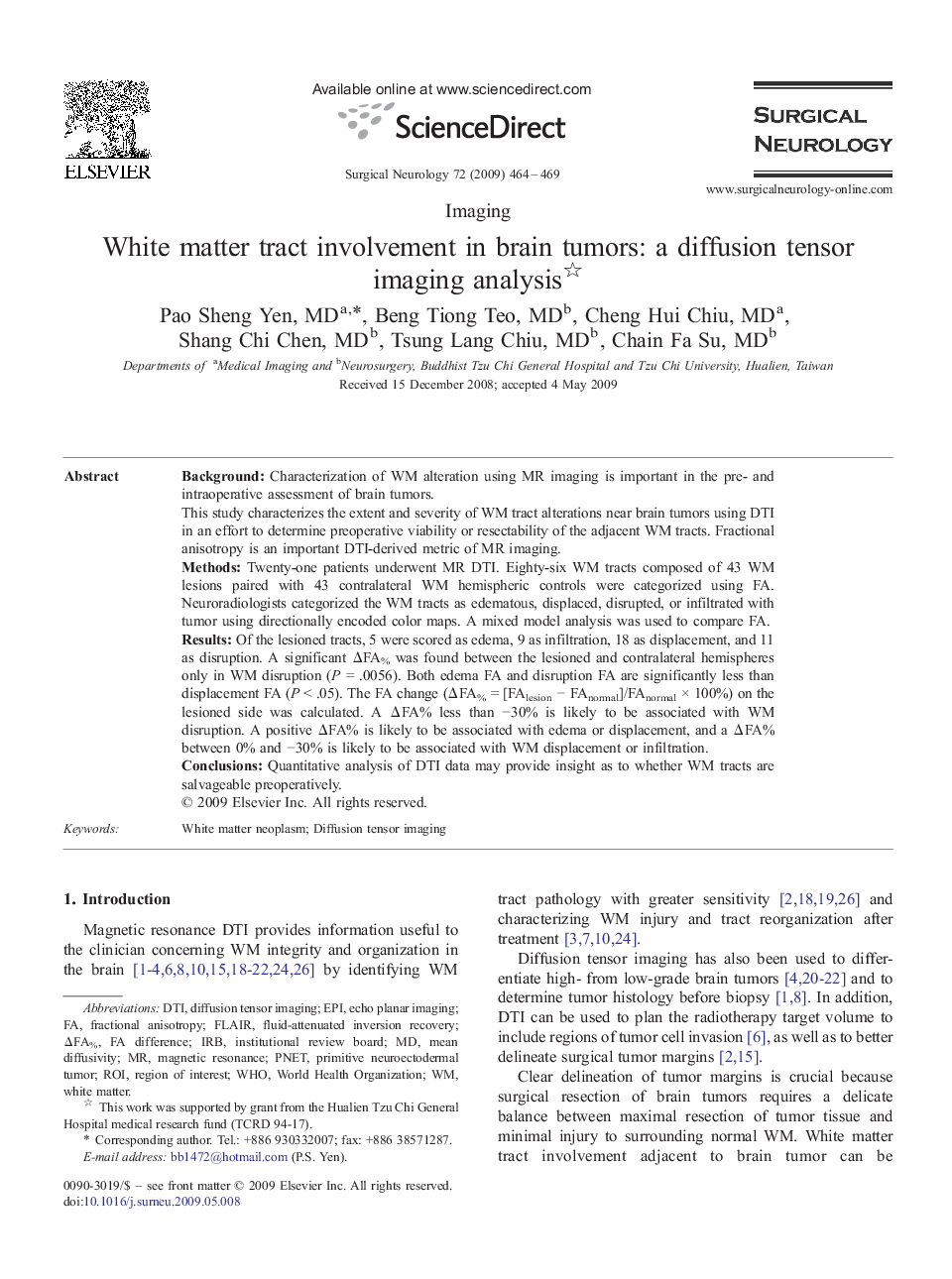| Article ID | Journal | Published Year | Pages | File Type |
|---|---|---|---|---|
| 3092197 | Surgical Neurology | 2009 | 6 Pages |
BackgroundCharacterization of WM alteration using MR imaging is important in the pre- and intraoperative assessment of brain tumors.This study characterizes the extent and severity of WM tract alterations near brain tumors using DTI in an effort to determine preoperative viability or resectability of the adjacent WM tracts. Fractional anisotropy is an important DTI-derived metric of MR imaging.MethodsTwenty-one patients underwent MR DTI. Eighty-six WM tracts composed of 43 WM lesions paired with 43 contralateral WM hemispheric controls were categorized using FA. Neuroradiologists categorized the WM tracts as edematous, displaced, disrupted, or infiltrated with tumor using directionally encoded color maps. A mixed model analysis was used to compare FA.ResultsOf the lesioned tracts, 5 were scored as edema, 9 as infiltration, 18 as displacement, and 11 as disruption. A significant ΔFA% was found between the lesioned and contralateral hemispheres only in WM disruption (P = .0056). Both edema FA and disruption FA are significantly less than displacement FA (P < .05). The FA change (ΔFA% = [FAlesion − FAnormal]/FAnormal × 100%) on the lesioned side was calculated. A ΔFA% less than −30% is likely to be associated with WM disruption. A positive ΔFA% is likely to be associated with edema or displacement, and a ΔFA% between 0% and −30% is likely to be associated with WM displacement or infiltration.ConclusionsQuantitative analysis of DTI data may provide insight as to whether WM tracts are salvageable preoperatively.
